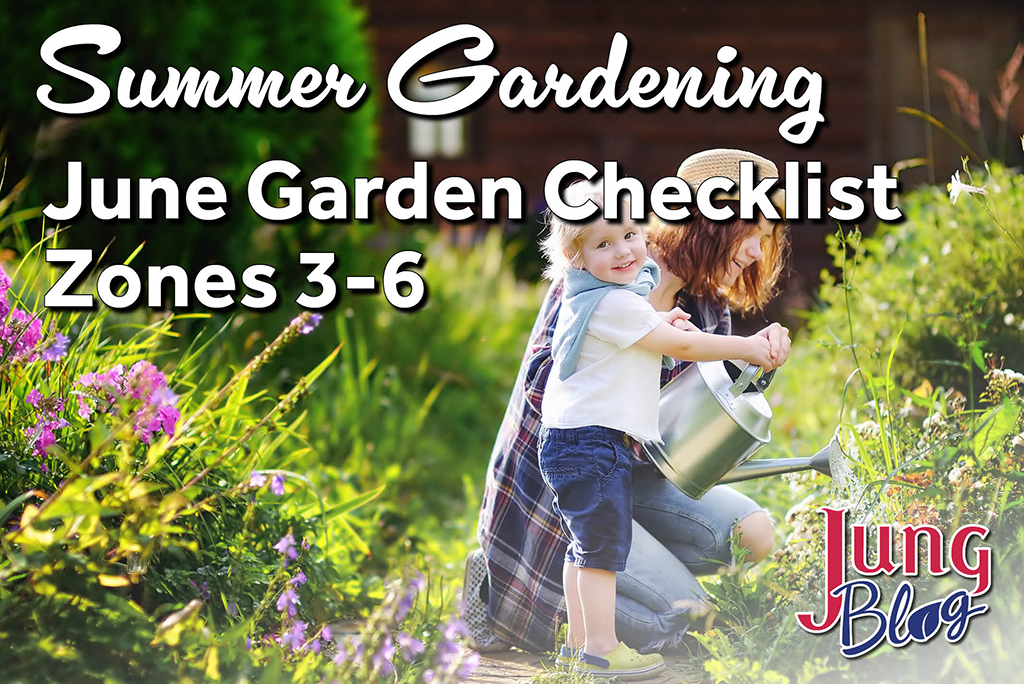
As we turn the calendar to summer, it’s time to focus on garden maintenance. However, it’s not too late for planting if you got off to a delayed start, so take the time to get those last-minute veggies or annuals in the ground or containers.
Fertilizing In The Summer
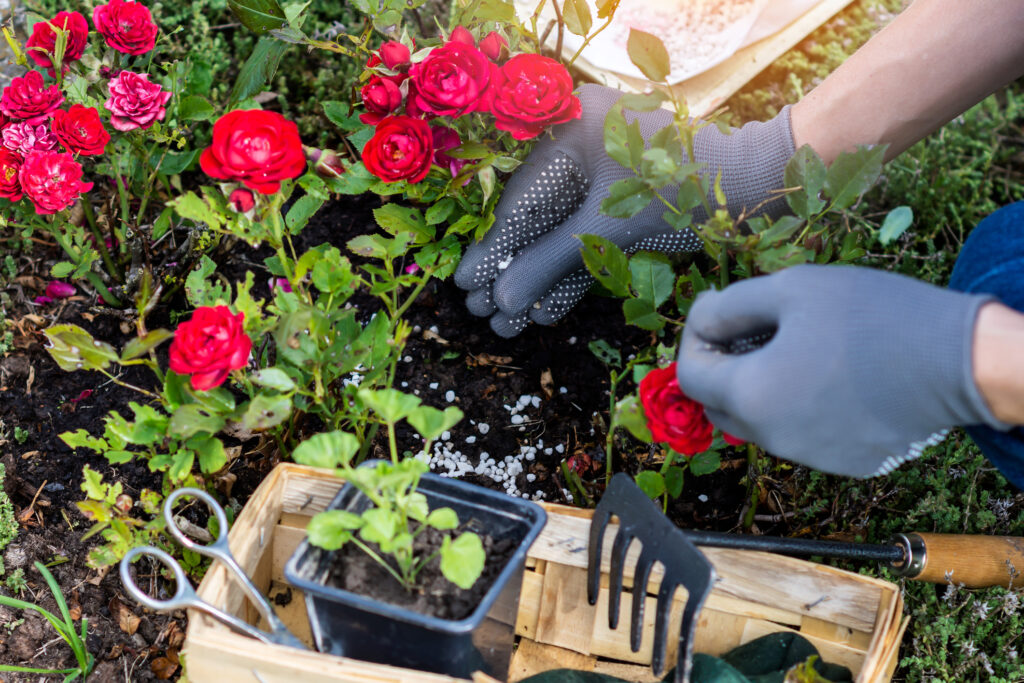
As your container annuals get settled in, you can feed them with all-purpose fertilizer to provide an extra boost. You can also fertilize in-ground annuals. And depending on the fertilizer, it’s usually recommended to fertilize every 7-14 days. You can also fertilize other landscape plants, but one key to healthy growth is choosing plants that grow well in your existing soil. Roses will also benefit from fertilizer as they finish their initial blooming in June.
Harvesting from Your Summer Garden
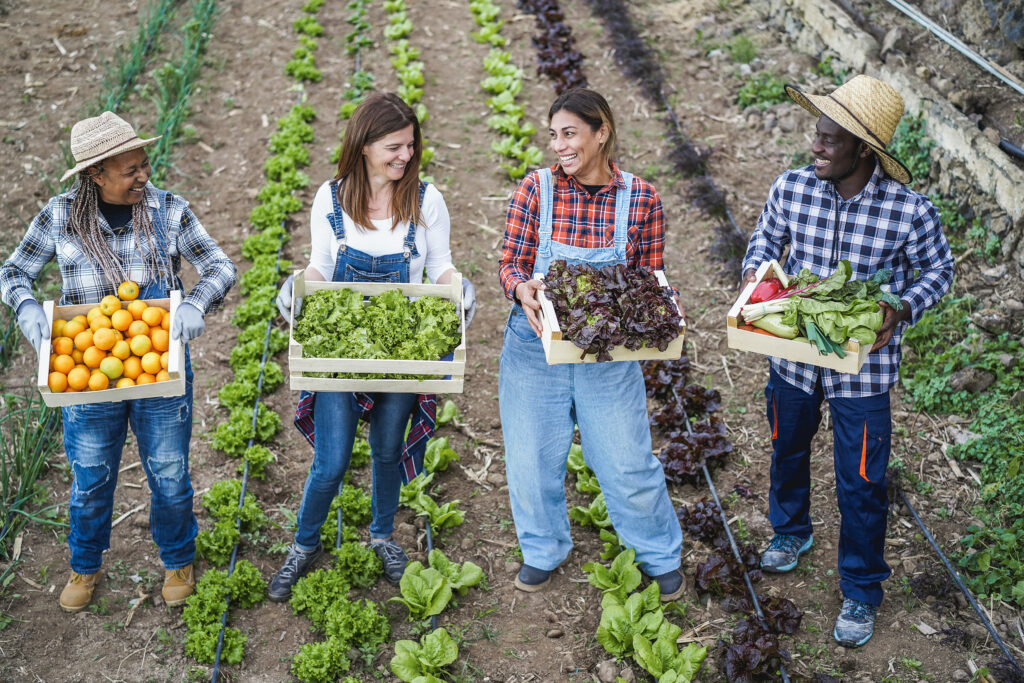
From herbs to cool-season veggies, early summer is a great time to use these plants in salads and other recipes. Herbs can be trimmed regularly to encourage new growth and provide flavor all summer long.
Moving Your Houseplants Outside
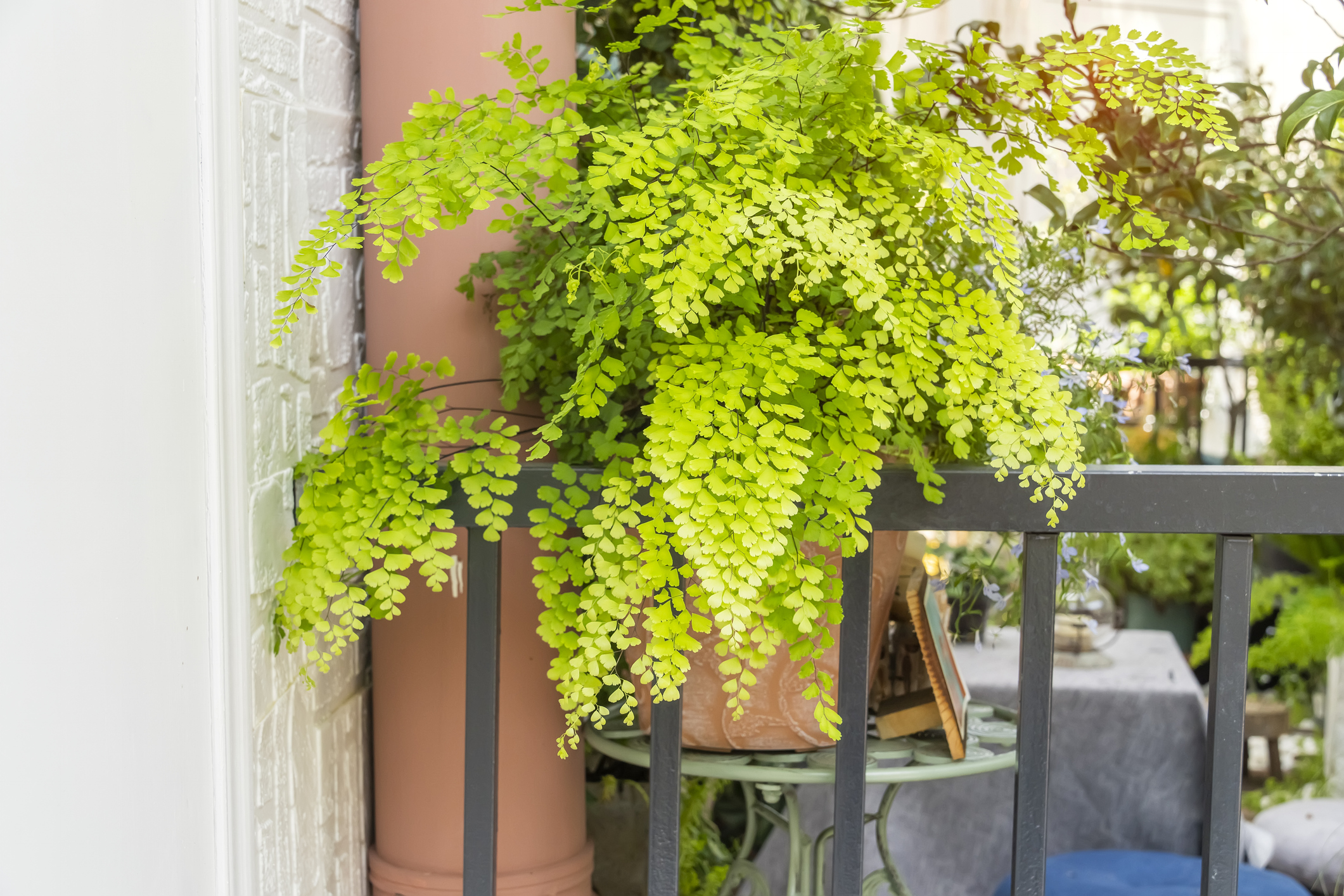
If you’re itching to move your plants outside, June is a safe month for leaving houseplants outside. If those plants haven’t been acclimated, keep them in a shady environment for a couple of weeks and gradually expose them to sunlight, unless they prefer shade.
Summer Bulb Planting
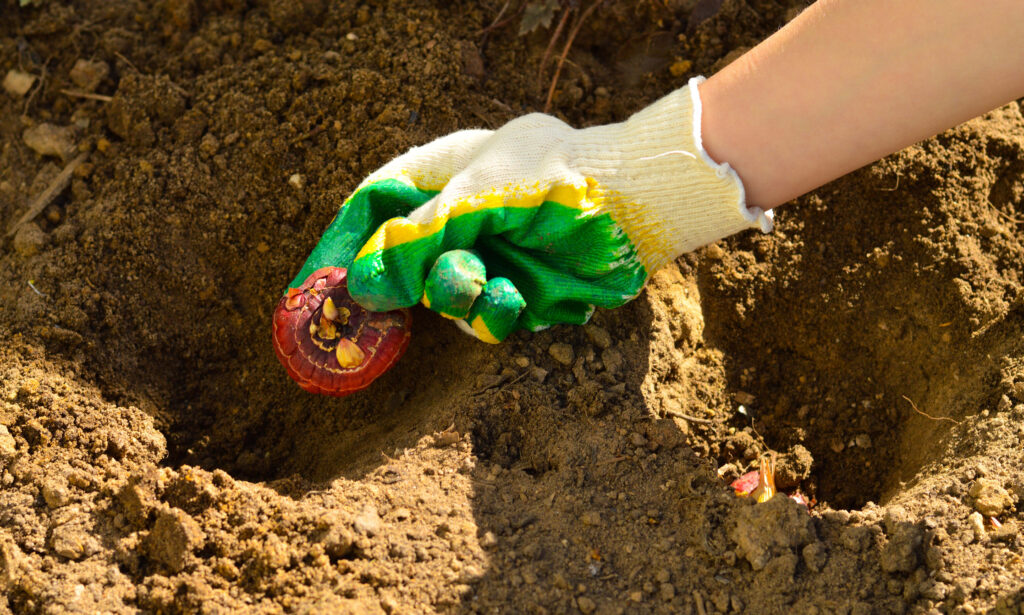
There’s still time to plant, so look for areas in the landscape that could use some color, especially in early summer. To add more color in the coming months, plant summer bulbs such as lilies, cannas, dahlias, and gladiolus.
Summer Garden Weeding
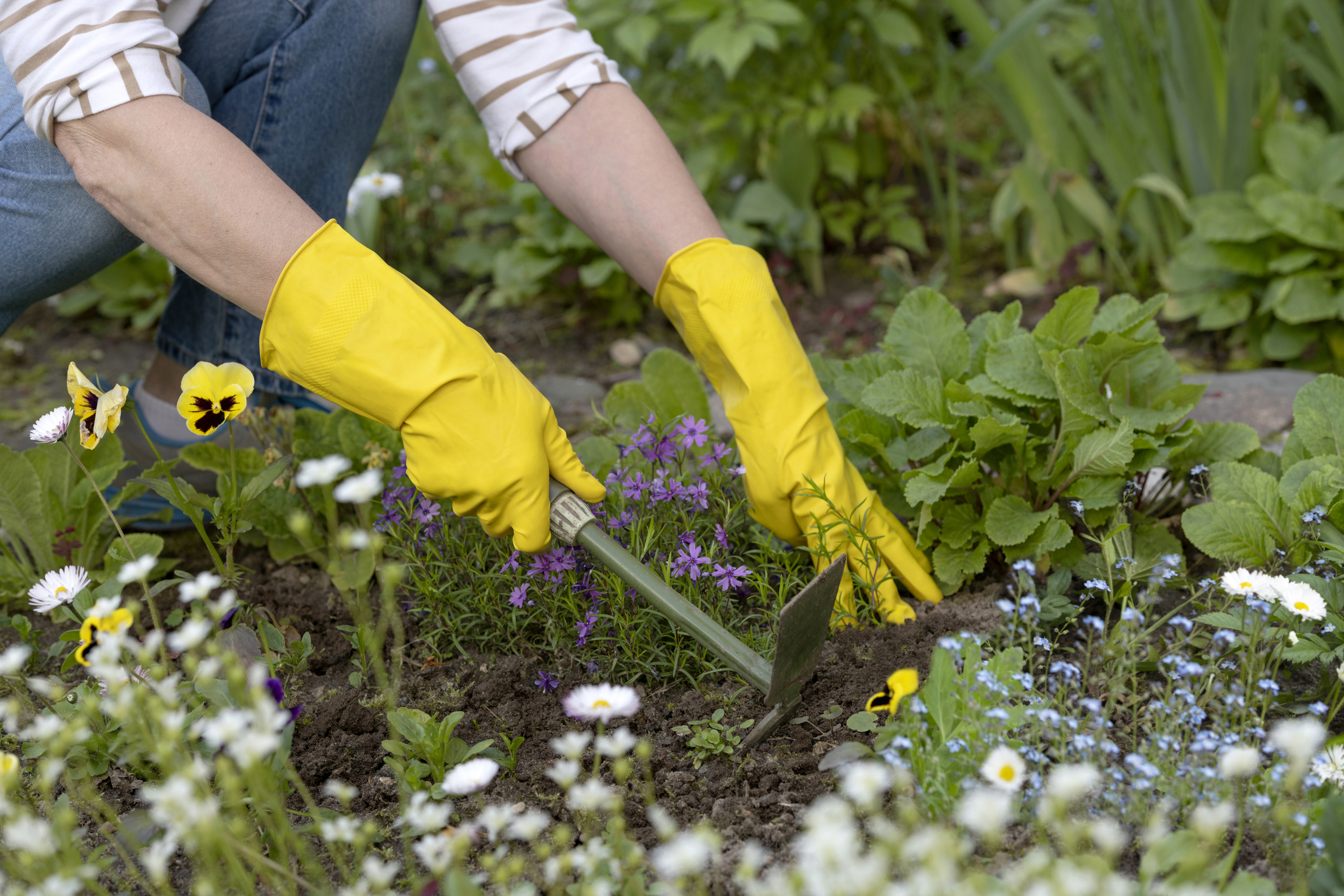
This may feel like a never-ending task, but even a few minutes daily can make a difference. Depending on the layout of your garden, a cultivator or hand weeding is often best for this task. In addition to moisture retention, mulch can also slow down weeds, so early summer is a good time for installing mulch while the plants are still small.
Summer Pest and Disease Control
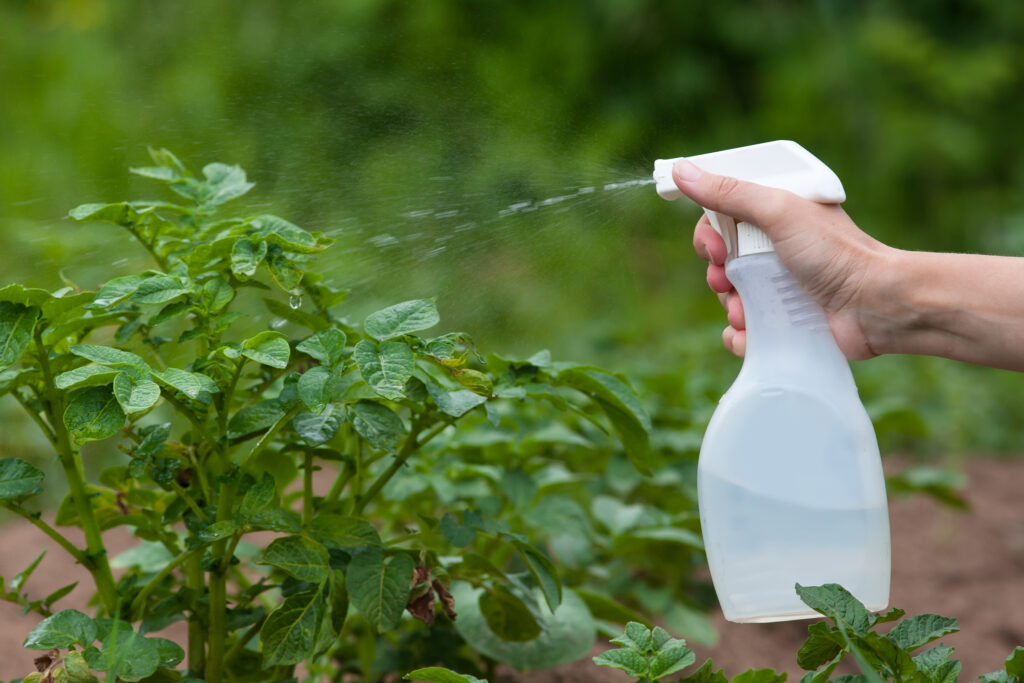
Whether you’re planting veggies or trees, early summer is a good time to scout for pest or disease issues. One of the more common insects you may encounter is aphids, which consume the plant sap and cause yellow or distorted growth. Applying a strong water stream can dislodge small populations of aphids and other insects. Mites can also be a problem during stretches of hot, dry weather. Insecticides are practical as well but should only be used as necessary.
Summer Shrub Pruning
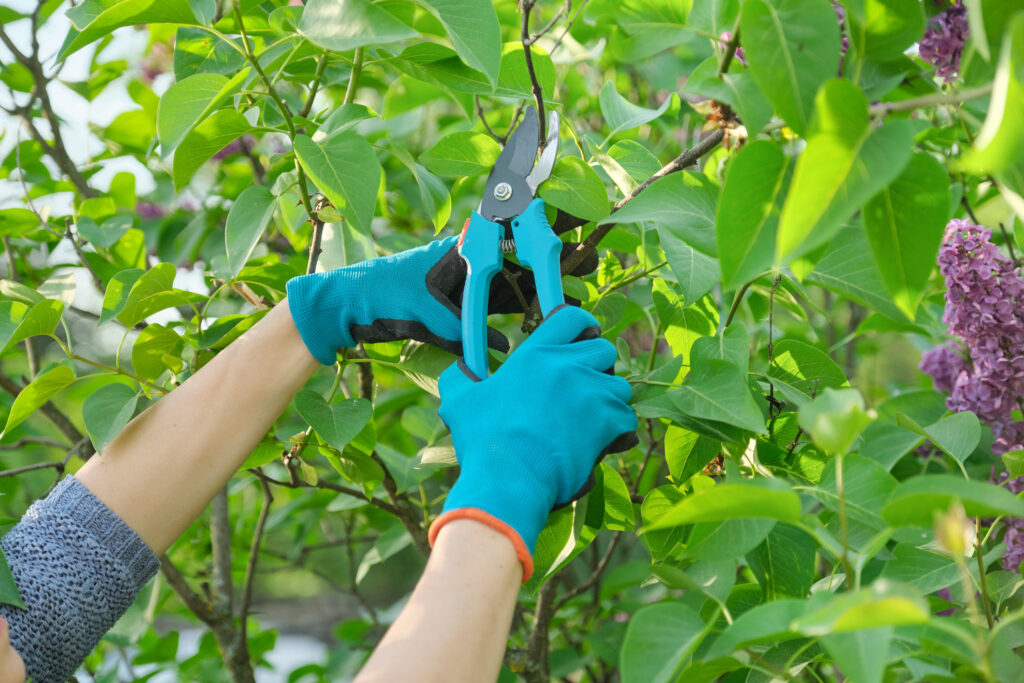
Take the time to prune any spring flowering shrubs that could use extra vigor in the future, especially lilacs, forsythia, fothergilla, and mock orange. Renewal pruning involves removing up to 1/3 of the oldest stems each year to gradually rejuvenate the plant while retaining its structure. Another method is to cut back the younger stems by 1/3 to keep the plants at a certain size.
Overgrown shrubs can be cut in early spring to rejuvenate the whole plant at once. This rejuvenation method works well for forsythia, lilacs, and spirea.
Vegetable Staking
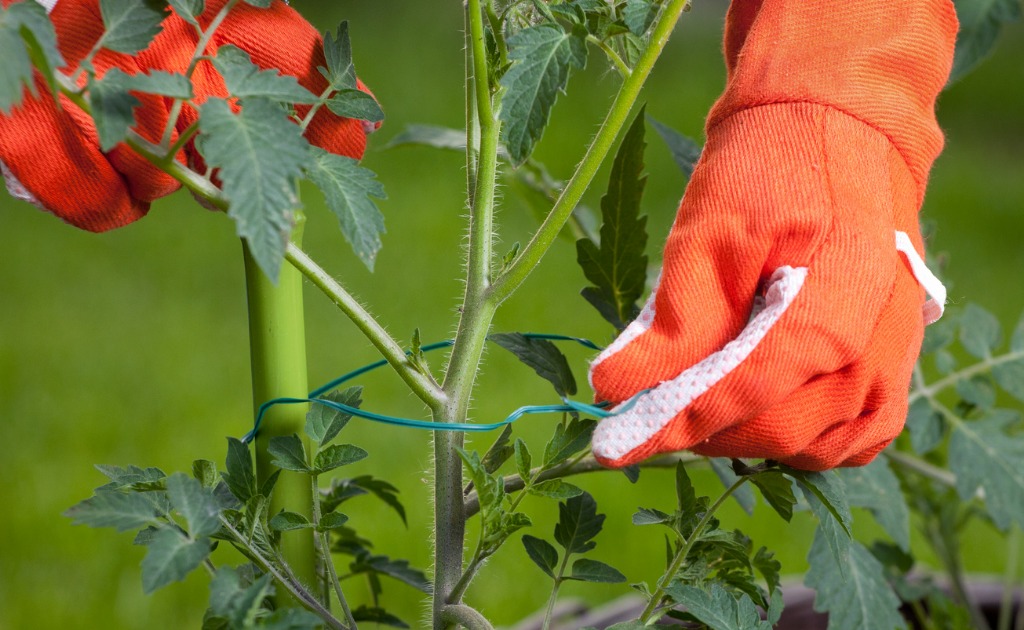
Vines and tomatoes should be staked while the plants are still short. This allows you to weave the new growth through the cage and keep the plants upright. And to conserve space, other veggies can be staked, including cucumbers, watermelon, peas, and pole beans. The extra support also keeps the leaves and fruit clean as the plants mature.
Watering Tips For Your Summer Garden
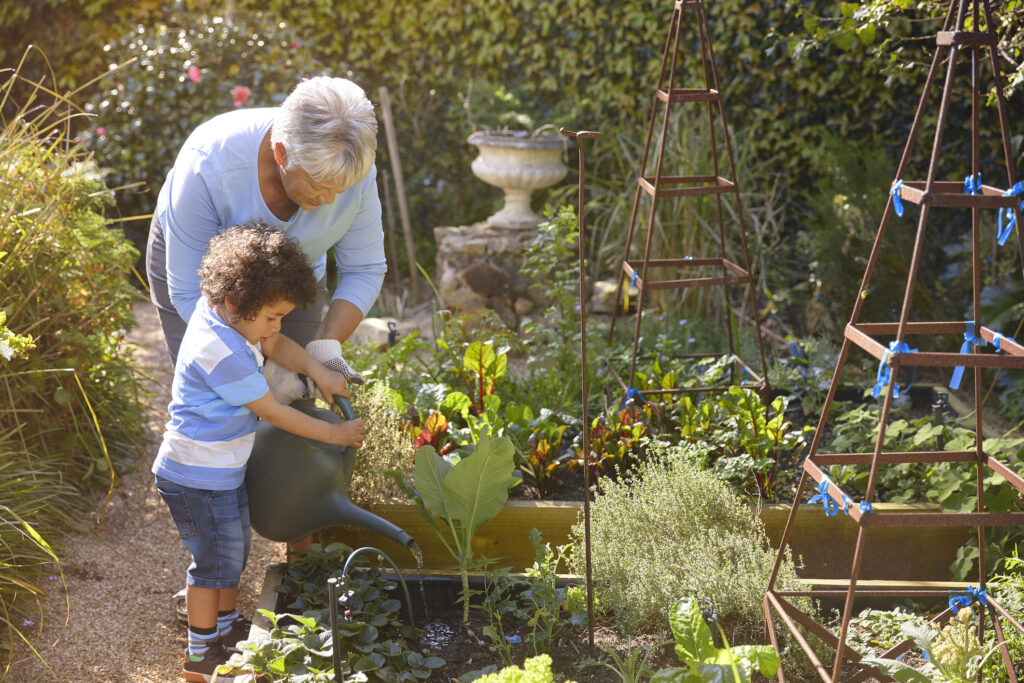
Watering is one of the most critical tasks for this time of year, which may sound basic but is crucial for a healthy garden. Whether you’ve planted shrubs, trees, annuals, or veggies, all new plants require watering to become established. Here are tips for watering different types of plants.
Vegetables, Annuals, and Perennials
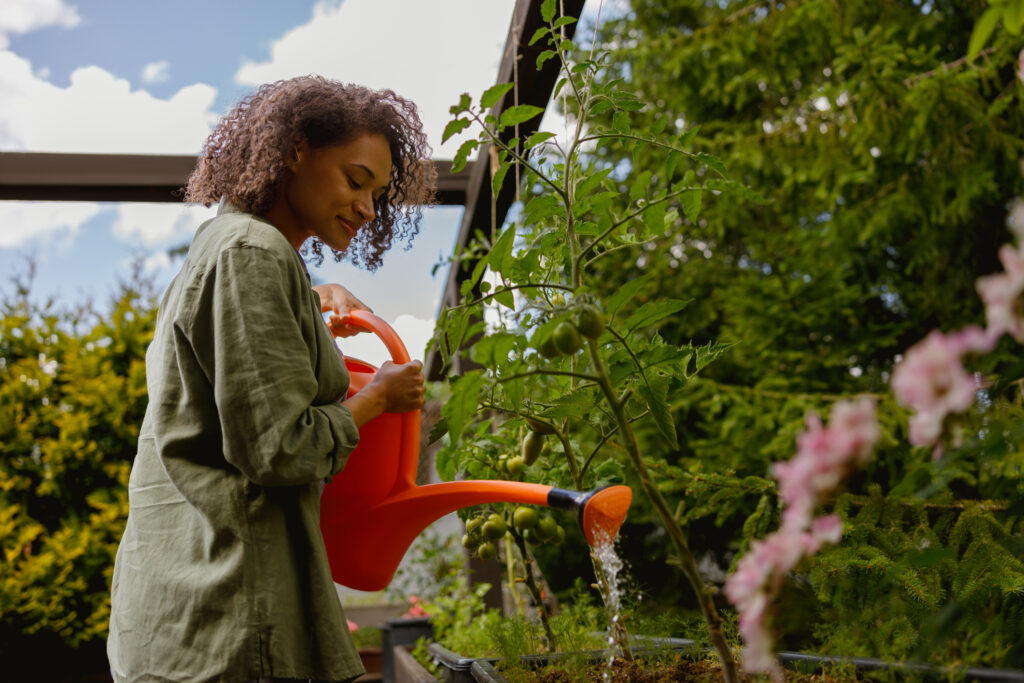
Did you know water makes up almost 90% of these plants? Much like our bodies, they need lots of moisture to keep functioning. In the weeks after planting, these plants usually need 1 inch of water per week to remain healthy. So how do you know if your plants are receiving 1 inch?
A rain gauge is helpful if your garden is getting rain, but the easiest way to track watering needs is to stick your finger or a trowel in the soil to check for moisture. If the soil begins feeling dry a few inches into the soil, it’s time to water. While it’s OK to water on a schedule, it’s best to water based on the moisture levels in the soil. Some plants can handle drier conditions, but every plant will likely need watering in the weeks after planting.
What’s the best way to water? When I first started gardening, my instinct was to water the leaves. After all, they need water too. Soon afterward, I learned that watering the leaves is not necessary or helpful because the roots supply the leaves with water. This holds true for all our plants, so focus on watering the roots, not the leaves. Keeping the leaves dry will reduce disease problems and give you healthier plants in the long run.

Another factor to consider is timing. In general, mornings are best for watering, but afternoons are also fine if your schedule is full in the morning. Watering early in the day allows plants to absorb moisture before the afternoon heat arrives. To help plants develop larger root systems, give them infrequent but deep watering instead of small amounts.
As the season progresses, your plants will not need as much extra water but continue monitoring them for signs of water stress, like wilting leaves or dry, cracked soil. Adding compost and other forms of organic matter, as well as mulching around the plants, can help your soil retain more water.
Plants grown in containers usually need more water than plants in the ground, so keep that in mind when selecting new plants.
Trees and Shrubs
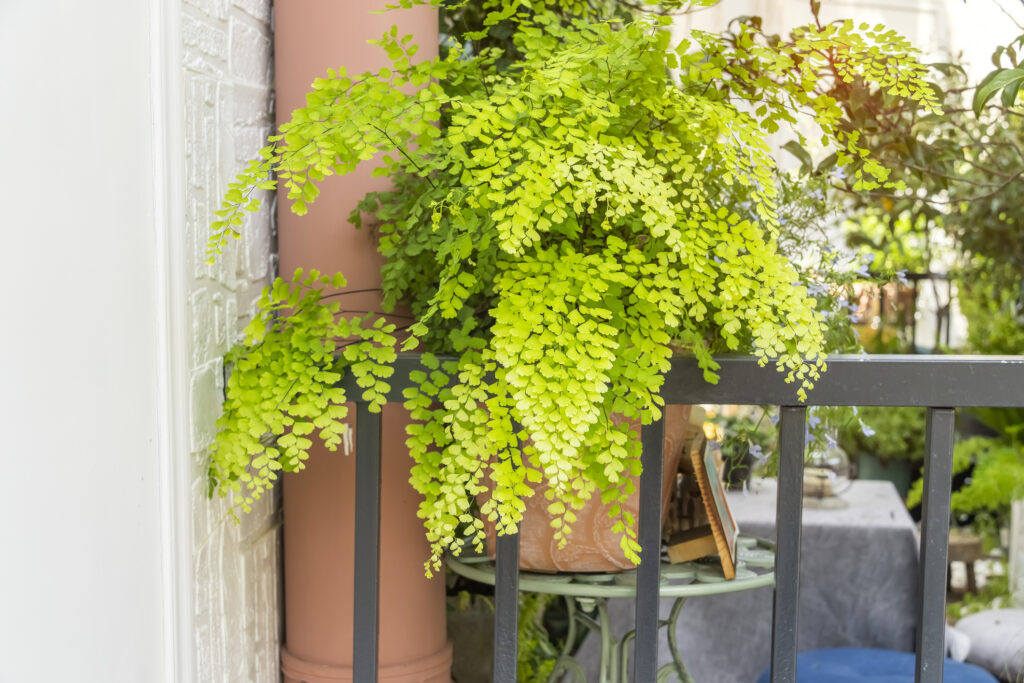
Woody plants have similar water needs, but they usually take longer to establish. Sometimes, you may have to provide supplemental water for two years after planting, depending on the rainfall you receive. A layer of bark mulch can help cool the root zone and let the roots hold moisture for longer.
Other Recommended Reading
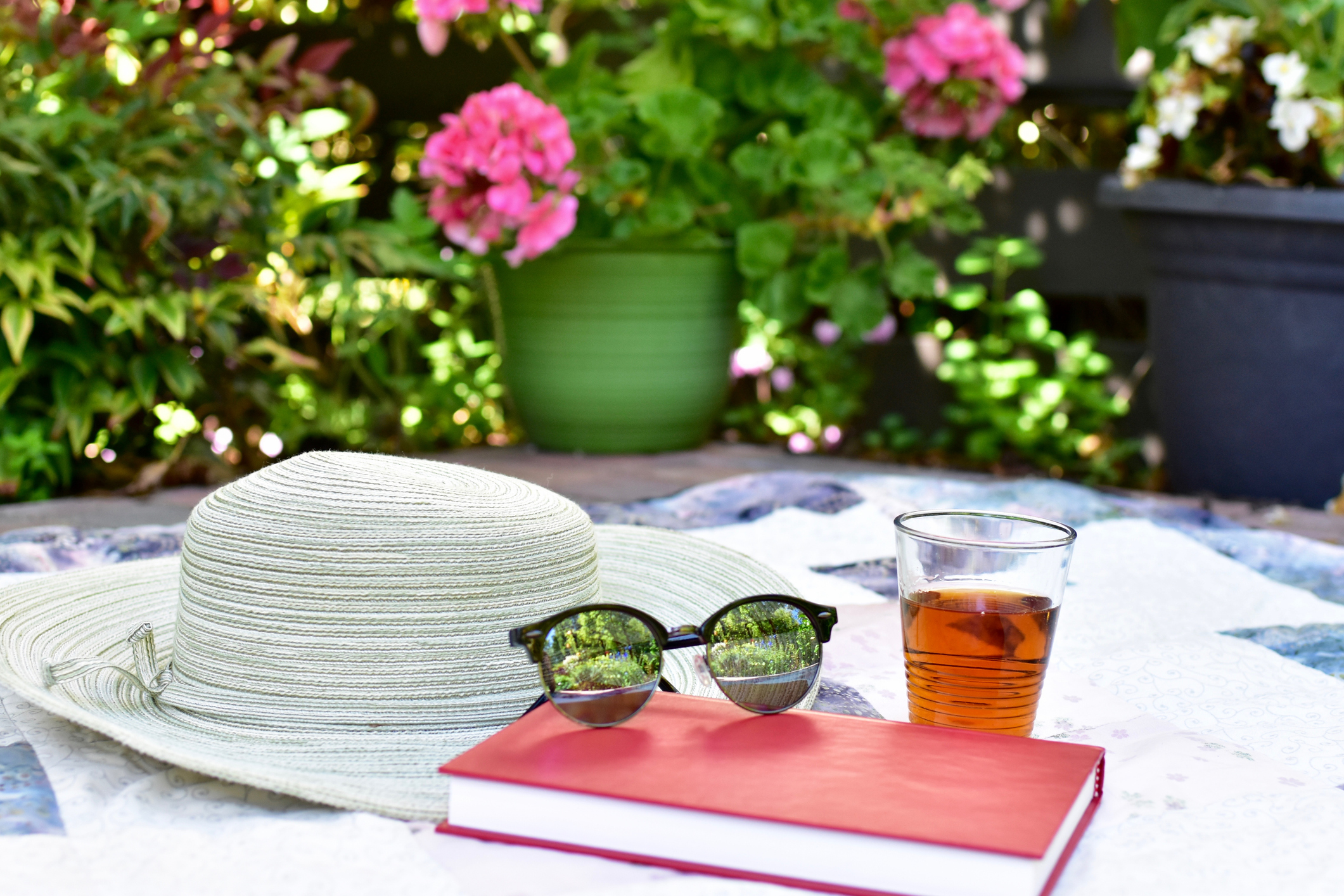
- Create Sizzling Summer Container Displays
- How To Prevent & Control Weeds
- Selecting Shrubs for Colorful Foliage
- Controlling Common Vegetable Garden Pests
- Easy Tips For Vegetable Harvest & Storage
At Jung Seed Co, we strive to be your go-to guide for all your gardening needs. Our YouTube channel The Garden Doctor by Dick Zondag is where he provides gardening tips for all levels of gardeners. When you need reliable gardening advice, turn to the trusted experts at Jung.
View our new catalog online or browse our website for your gardening favorites. To receive info on new products, exclusive deals, and specials, be sure to sign up for our weekly email. Join our Facebook page, to discuss all things gardening!
About the Author: Matthew Olson is a professional horticulturist and garden writer. He has a bachelor’s degree in horticulture from UW-River Falls and is a certified professional with the Minnesota Nursery and Landscape Association. His enthusiasm for plants and the outdoors brought him to the green industry. He regularly writes articles about gardening for both gardeners and industry professionals. He can be reached at matt@mattolsonhorticulture.com.